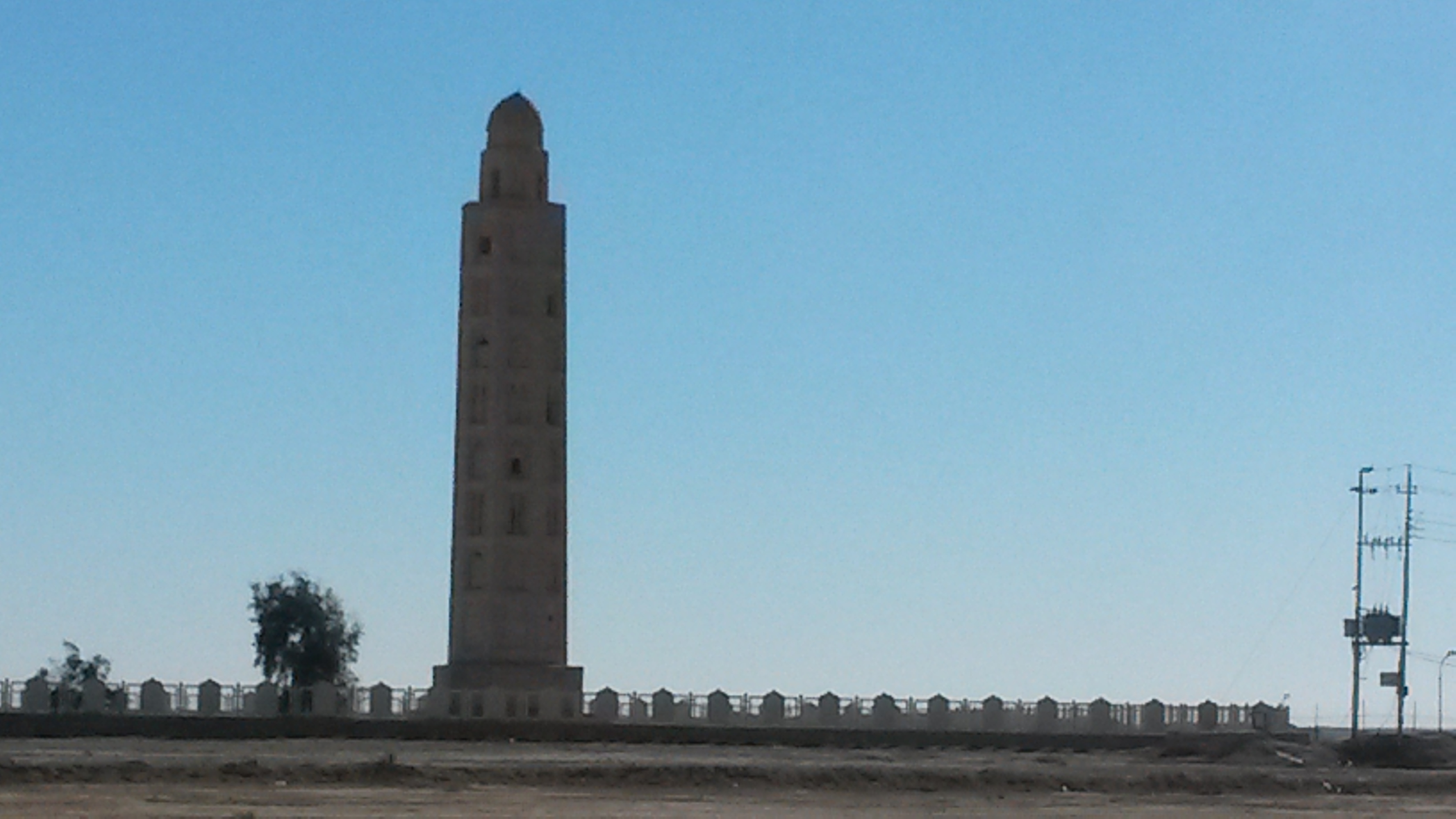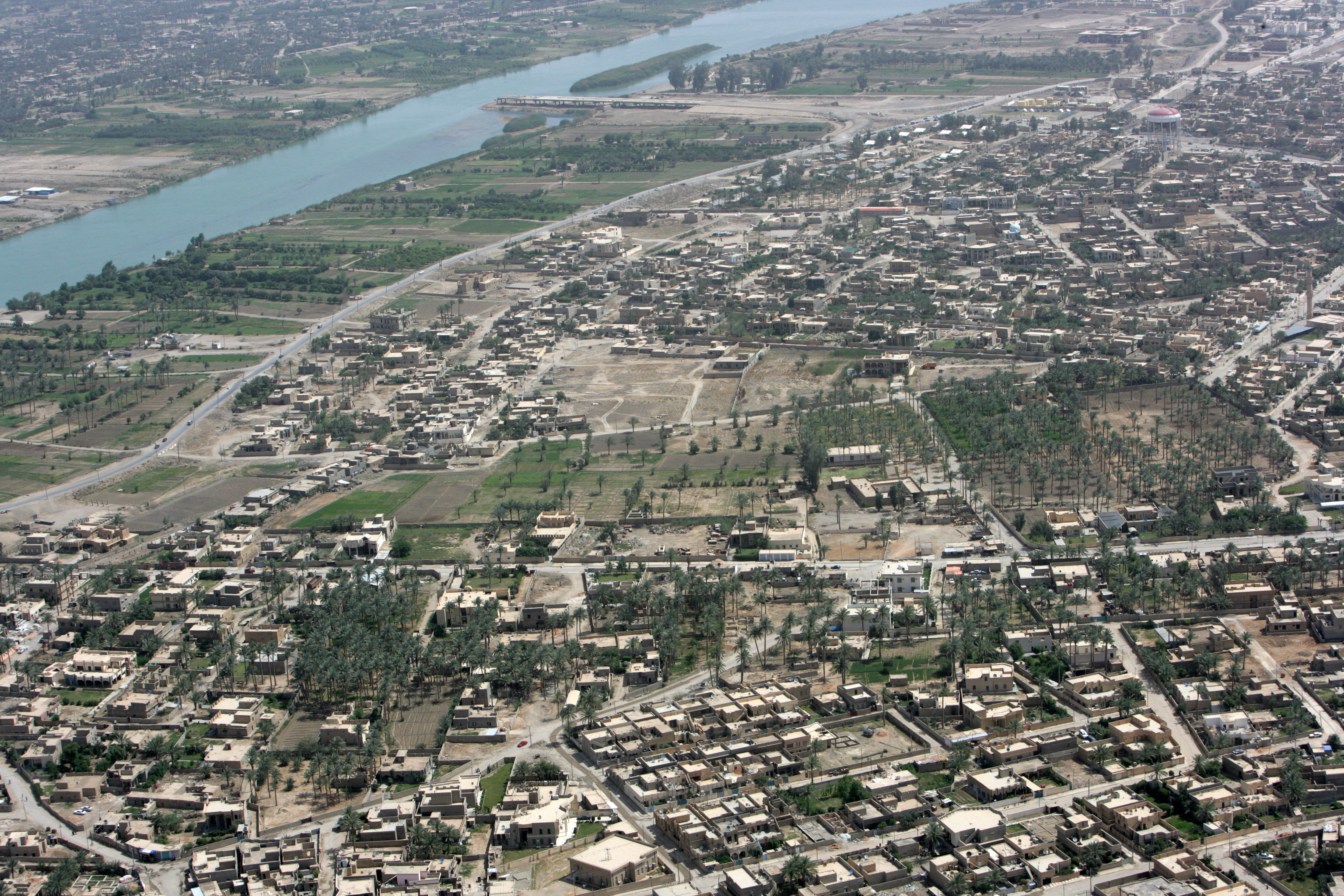|
'Ana
Anah or Ana ( ar, عانة, ''ʾĀna'', syr, ܐܢܐ), formerly also known as Anna, is an Iraqi town on the Euphrates river, approximately midway between the Gulf of Alexandretta and the Persian Gulf. Anah lies from west to east on the right bank along a bend of the river just before it turns south towards Hit. Name The town was called (d)Ha-na-at in cuneiform texts from the Old Babylonian period, A-na-at by the scribes of Tukulti-Ninurta BC, and An-at by the scribes of Assur-nasir-pal II in 879 BC. The name has been connected with the widely worshipped war goddess Anat. It was known as ''Anathō'' ( grc-gre, Άναθω) to Isidore Charax and ' to Ammianus Marcellinus; early Arabic writers described it variously as ''ʾĀna'' or (as if plural) ''ʾĀnāt''. History Middle Bronze The earliest references to Anah are probably found in letters of the period of Zimri-Lim of Mari. Under Hammurapi of Babylon the town was under Babylonian control, being included in th ... [...More Info...] [...Related Items...] OR: [Wikipedia] [Google] [Baidu] |
Xenophon
Xenophon of Athens (; grc, wikt:Ξενοφῶν, Ξενοφῶν ; – probably 355 or 354 BC) was a Greek military leader, philosopher, and historian, born in Athens. At the age of 30, Xenophon was elected commander of one of the biggest Ancient Greek mercenaries, Greek mercenary armies of the Achaemenid Empire, the Ten Thousand, that marched on and came close to capturing Babylon in 401 BC. As the military historian Theodore Ayrault Dodge wrote, "the centuries since have devised nothing to surpass the genius of this warrior". Xenophon established precedents for many logistical operations, and was among the first to describe strategic flanking maneuvers and feints in combat. Xenophon's ''Anabasis (Xenophon), Anabasis'' recounts his adventures with the Ten Thousand while in the service of Cyrus the Younger, Cyrus's failed campaign to claim the Persian throne from Artaxerxes II of Persia, and the return of Greek mercenaries after Cyrus's death in the Battle of Cunaxa. ''Anabasis ... [...More Info...] [...Related Items...] OR: [Wikipedia] [Google] [Baidu] |
Anat
Anat (, ), Anatu, classically Anath (; uga, 𐎓𐎐𐎚 ''ʿnt''; he, עֲנָת ''ʿĂnāṯ''; ; el, Αναθ, translit=Anath; Egyptian: '' ꜥntjt'') was a goddess associated with warfare and hunting, best known from the Ugaritic texts. Most researchers assume that she originated in the Amorite culture of Bronze Age upper Mesopotamia, and that the goddess Ḫanat, attested in the texts from Mari and worshiped in a city sharing her name located in Suhum, should be considered her forerunner. In Ugarit, Anat was one of the main goddesses, and regularly received offerings, as attested in texts written both in the local Ugaritic language and in Hurrian. She also frequently appears in myths, including the ''Baal Cycle'' and the ''Epic of Aqhat''. In the former, she is portrayed as a staunch ally of the weather god Baal, who assists him in his struggle for kingship, helps him with obtaining the permission to obtain a dwelling of his own, and finally mourns and avenges his d ... [...More Info...] [...Related Items...] OR: [Wikipedia] [Google] [Baidu] |
Cyrus The Younger
Cyrus the Younger ( peo, 𐎤𐎢𐎽𐎢𐏁 ''Kūruš''; grc-gre, Κῦρος ; died 401 BC) was an Achaemenid prince and general. He ruled as satrap of Lydia and Ionia from 408 to 401 BC. Son of Darius II and Parysatis, he died in 401 BC in battle during a failed attempt to oust his elder brother, Artaxerxes II, from the Persian throne. The history of Cyrus and of the retreat of his Greek mercenaries is told by Xenophon in his ''Anabasis''. Another account, probably from Sophaenetus of Stymphalus, was used by Ephorus. Further information is contained in the excerpts from Artaxerxes II's physician, Ctesias, by Photius; ''Plutarch’s Lives'' of Artaxerxes II and Lysander; and Thucydides' ''History of Peloponnesian War''. These are the only early sources of information on Cyrus the Younger. Biography According to Xenophon, Cyrus the Younger was born after the accession of his father in 424 BC. He had an elder brother, Arsicas (whose name changed to Artaxerxes II when he a ... [...More Info...] [...Related Items...] OR: [Wikipedia] [Google] [Baidu] |
Parasang
The parasang is a historical Iranian unit of walking distance, the length of which varied according to terrain and speed of travel. The European equivalent is the league. In modern terms the distance is about 3 or 3½ miles (4.8 or 5.6 km). Historical usage The parasang may have originally been some fraction of the distance an infantryman could march in some predefined period of time. Mid-5th-century BCE Herodotus (v.53) speaks of n armytraveling the equivalent of five parasangs per day. In antiquity, the term was used throughout much of the Middle East, and the Old Iranian language from which it derives can no longer be determined (only two—of what must have been dozens—of Old Iranian languages are attested). There is no consensus with respect to its etymology or literal meaning. In addition to its appearance in various forms in later Iranian languages (e.g. Middle Persian ''frasang'' or Sogdian ''fasukh''), the term also appears in Greek as ''parasangēs'' (), in ... [...More Info...] [...Related Items...] OR: [Wikipedia] [Google] [Baidu] |
Al-Anbar Governorate
Al Anbar Governorate ( ar, محافظة الأنبار; ''muḥāfaẓat al-’Anbār''), or Anbar Province, is the largest governorate in Iraq by area. Encompassing much of the country's western territory, it shares borders with Syria, Jordan, and Saudi Arabia. The population is mostly Sunni Muslims. The provincial capital is Ramadi; other important cities include Fallujah and Al-Qa'im. The governorate was known as Ramadi up to 1976 when it was renamed Al Anbar Province, and it was known as Dulaim before 1962. A large majority of the inhabitants of the province are Sunni Muslims and most belong to the Dulaim tribe, all of which speak Arabic. In early 2014, the Islamic State, with the assistance of some local Sunni militias, launched a successful campaign to seize control of the province from the Iraqi government. Numerous offensive actions were undertaken by the Iraqi government, with the assistance of local Sunni tribes to remove ISIL's occupation of the province, especially ... [...More Info...] [...Related Items...] OR: [Wikipedia] [Google] [Baidu] |
Babylonia
Babylonia (; Akkadian: , ''māt Akkadī'') was an ancient Akkadian-speaking state and cultural area based in the city of Babylon in central-southern Mesopotamia (present-day Iraq and parts of Syria). It emerged as an Amorite-ruled state c. 1894 BCE. During the reign of Hammurabi and afterwards, Babylonia was called "the country of Akkad" (''Māt Akkadī'' in Akkadian), a deliberate archaism in reference to the previous glory of the Akkadian Empire. It was often involved in rivalry with the older state of Assyria to the north and Elam to the east in Ancient Iran. Babylonia briefly became the major power in the region after Hammurabi ( fl. c. 1792–1752 BCE middle chronology, or c. 1696–1654 BCE, short chronology) created a short-lived empire, succeeding the earlier Akkadian Empire, Third Dynasty of Ur, and Old Assyrian Empire. The Babylonian Empire rapidly fell apart after the death of Hammurabi and reverted to a small kingdom. Like Assyria, the Babylonian state retained ... [...More Info...] [...Related Items...] OR: [Wikipedia] [Google] [Baidu] |
Sassanid Empire
The Sasanian () or Sassanid Empire, officially known as the Empire of Iranians (, ) and also referred to by historians as the Neo-Persian Empire, was the last Iranian empire before the early Muslim conquests of the 7th-8th centuries AD. Named after the House of Sasan, it endured for over four centuries, from 224 to 651 AD, making it the longest-lived Persian imperial dynasty. The Sasanian Empire succeeded the Parthian Empire, and re-established the Persians as a major power in late antiquity alongside its neighbouring arch-rival, the Roman Empire (after 395 the Byzantine Empire).Norman A. Stillman ''The Jews of Arab Lands'' pp 22 Jewish Publication Society, 1979 International Congress of Byzantine Studies ''Proceedings of the 21st International Congress of Byzantine Studies, London, 21–26 August 2006, Volumes 1–3'' pp 29. Ashgate Pub Co, 2006 The empire was founded by Ardashir I, an Iranian ruler who rose to power as Parthia weakened from internal strife and wars with th ... [...More Info...] [...Related Items...] OR: [Wikipedia] [Google] [Baidu] |
Julian (emperor)
Julian ( la, Flavius Claudius Julianus; grc-gre, Ἰουλιανός ; 331 – 26 June 363) was Roman emperor from 361 to 363, as well as a notable philosopher and author in Greek. His rejection of Christianity, and his promotion of Neoplatonic Hellenistic religion, Hellenism in its place, caused him to be remembered as Julian the Apostate in Christian tradition. A nephew of Constantine I, Constantine, Julian was one of few in the imperial family to survive the purges and civil wars during the reign of Constantius II, his cousin. Julian became an orphan as a child after his father was executed in 337, and spent much of his life under Constantius's close supervision.''Oxford Dictionary of Late Antiquity'', "Julian the Apostate", p. 839 However, the emperor allowed Julian to freely pursue an education in the Greek-speaking east, with the result that Julian became unusually cultured for an emperor of his time. In 355, Constantius II summoned Julian to court and appointed him to ru ... [...More Info...] [...Related Items...] OR: [Wikipedia] [Google] [Baidu] |
Pylae
Yalova is a market-gardening town located in northwestern Turkey on the eastern coast of the Sea of Marmara. The town has a population of 156,838, while the population of the surrounding Yalova Province is 291,001 . A largely modern town, it is best known for the spa resort at nearby Termal, a popular summer retreat for residents of Istanbul. Regular ferries connect Yalova with Istanbul via the Sea of Marmara. They are operated by İDO. Name The name ''Yalova'' is assumed to be a contraction of ''Yalıova''. ''Yalı'' means 'house at the coast' and ''ova'' means 'plain' in Turkish. History Ancient Yalova The first settlement in the region dates back to the Prehistoric Period, in around 3000 BC. The Hittites ruled the region in the 21st century BC, followed by the Phrygians in the 13th century BC, and then the Greeks in the archaic, classical and Hellenistic eras. The region was conquered by the Romans in 74 BC. After the fall of the Roman Empire, it became part of ... [...More Info...] [...Related Items...] OR: [Wikipedia] [Google] [Baidu] |
Al-Qa'im (town)
Al-Qa'im ( ar, القائم) is an Iraqi border town located nearly 400 km (248 mi) northwest of Baghdad near the Syrian border and situated along the Euphrates River, and located in the Al Anbar Governorate. It has a population of about 74,100 and it's the center of the Al-Qa'im District. The river water at Al-Qa'im carries less salt and mineral, so that it takes significantly less water to sustainably produce crops here than farther downstream, where more gallons of water must be used to avoid salinity. The Al-Qa'im border crossing connects Al-Qaim to close city Abu Kamal in Syria. Pre-war history In the early 20th century, there was a ''khan'' (caravanserai) and police station in Al-Qa'im, but no village. The ''khan'' was built in 1907 and was the residence of a local administrator. The surrounding area was inhabited by Arabs from the Karablah and Jara'if tribes. Al-Qa'im was reportedly the site of Iraq's refined uranium ore production from 1984 through 1990. The o ... [...More Info...] [...Related Items...] OR: [Wikipedia] [Google] [Baidu] |








